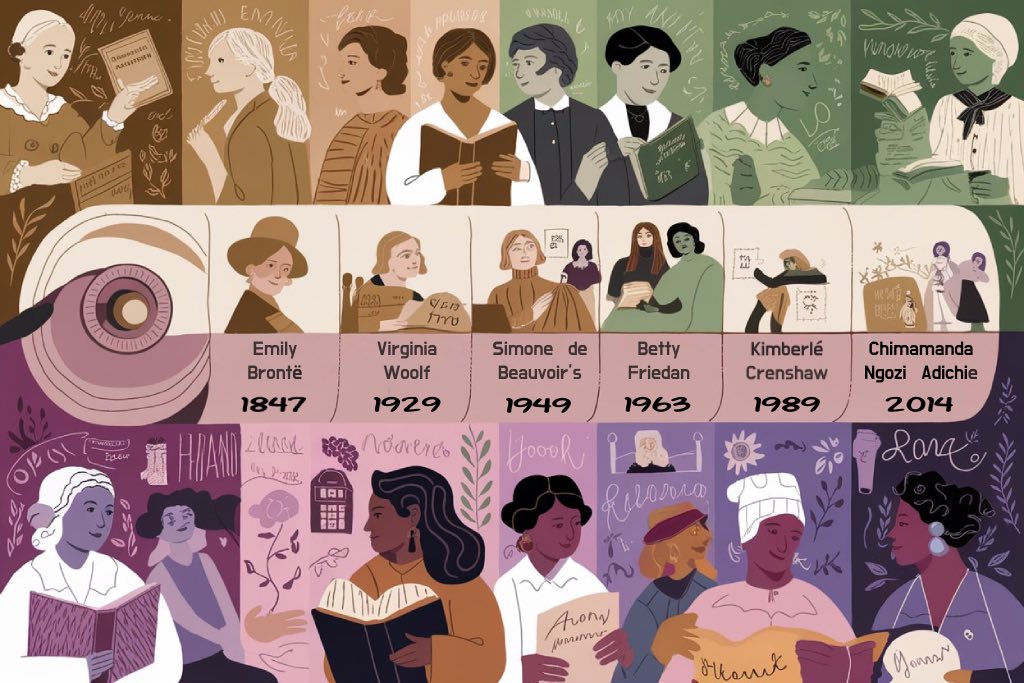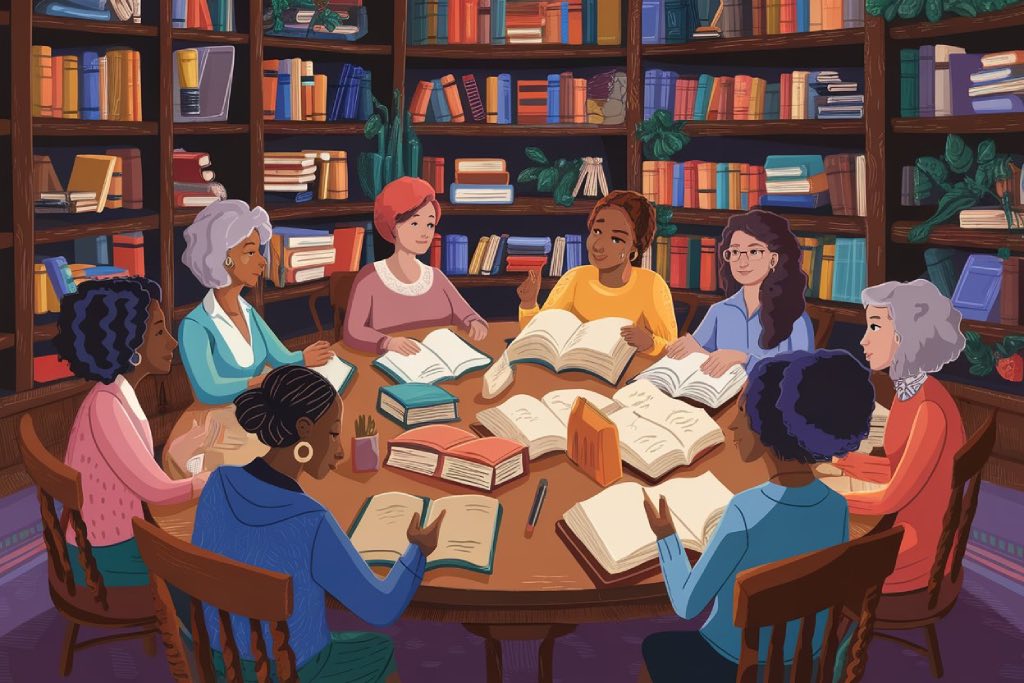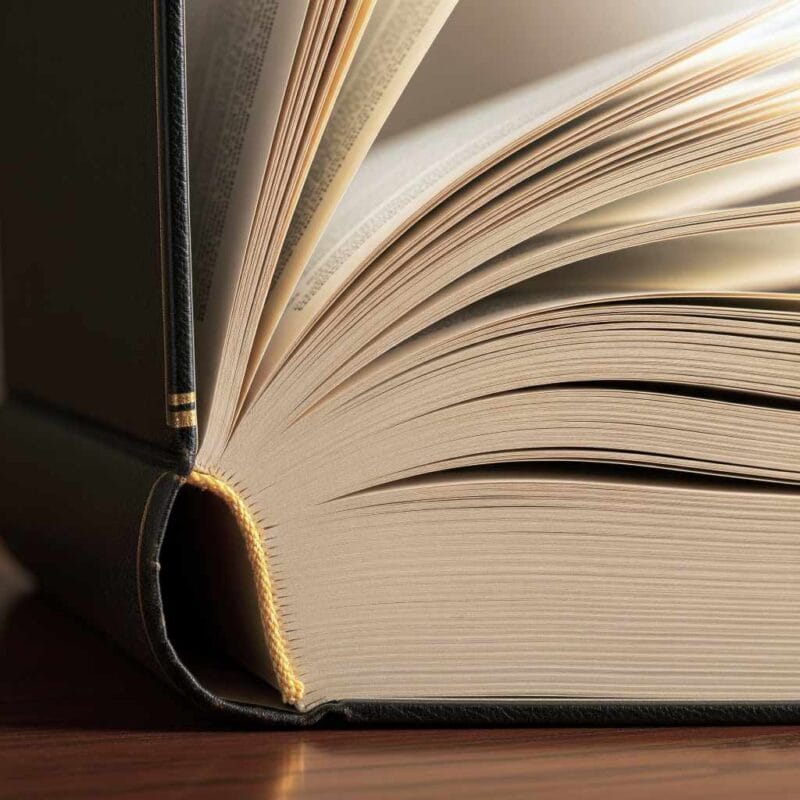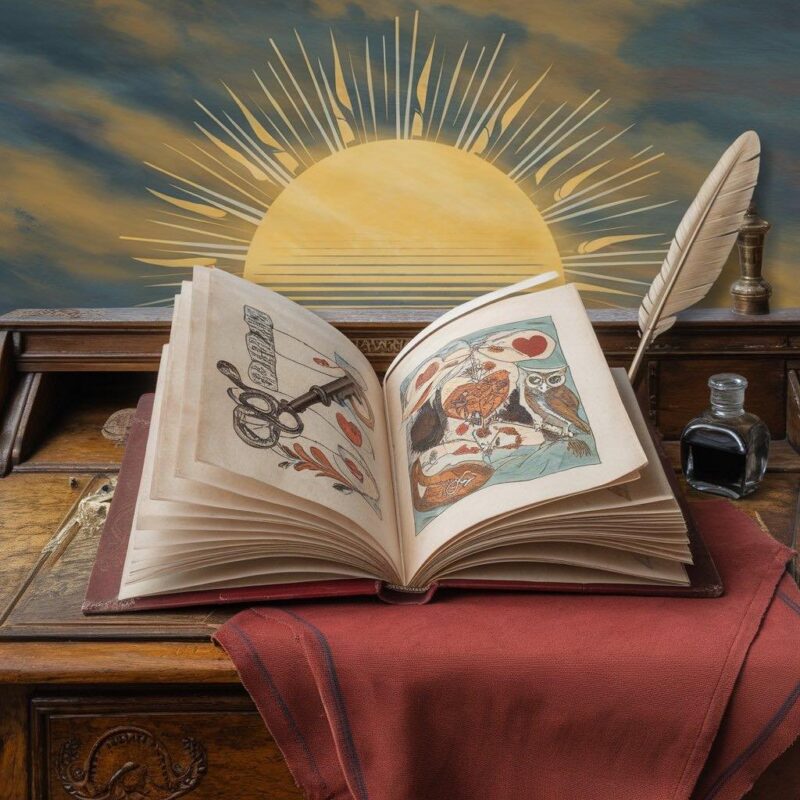- Feminist literary criticism provides a transformative lens to analyze texts, focusing on gender and power dynamics. It challenges the historical dominance of male voices in literature, amplifies marginalized perspectives, and uncovers hidden layers of meaning.
- This approach has evolved through contributions from pioneering thinkers like Virginia Woolf, Simone de Beauvoir, and contemporary critics inspired by Elaine Showalter and Julia Kristeva.
- Key themes include:
– Examining patriarchy and its influence on literature
– Critiquing the male gaze and its impact on female representation
– Exploring intersectionality, integrating race, class, and gender
– Advocating for authentic and diverse women’s representation - Influential works such as Simone de Beauvoir’s The Second Sex and Margaret Atwood’s The Handmaid’s Tale have significantly shaped the field.
- Feminist criticism encourages modern readers to critically engage with texts, fostering a deeper understanding of gender, power, and identity in literature, ultimately leading to a more enriching and transformative reading experience.
Feminist literary criticism is like putting on a new pair of glasses; it allows us to see the world of literature in a whole new light. It’s a lens through which we analyze texts, focusing on how they portray gender and power dynamics. Why does this matter? Because for centuries, literature has been largely dominated by male voices and perspectives.
Feminist criticism seeks to challenge this imbalance, giving voice to the marginalized and revealing the subtle ways in which gender influences storytelling. By applying a feminist lens, literary critics seek to uncover hidden layers of meaning in both classic and contemporary literature, paving the way for a deeper appreciation of various facets of the human experience.
Hence, feminist literary criticism, at its core, is the practice of analyzing literature through a feminist perspective. It considers how texts both shape and are shaped by ideas about gender, power, and equality. In doing so, it challenges the ways literature has historically reinforced gender biases and the patriarchal values embedded in storytelling.
Historical Roots and Evolution of Feminist Literary Criticism

The origins of feminist literary criticism trace back to influential figures such as Virginia Woolf and Simone de Beauvoir, who laid the foundations for analyzing gender in literature. Key approaches involve examining how traditional narratives have marginalized or misrepresented women. This critical perspective also highlights how literature can contribute to reinforcing or questioning public opinion around gender.
Contemporary feminist critics, including those inspired by thinkers like Elaine Showalter and Julia Kristeva, continue to broaden the dialogue within literary studies. They explore intersecting identities and consider how race, class, and sexuality impact the interpretation of texts. This comprehensive approach not only critiques existing works but also inspires new narratives that better reflect women’s varied experiences in literature.
Feminist literary criticism has evolved by challenging traditional perspectives, beginning with early thinkers and progressing through key feminist movements. This growth reflects important milestones and shifting cultural dynamics. The development is marked by significant contributions from pioneering women writers and critical events that shaped its theoretical framework.
Early Influences: Mary Wollstonecraft, Virginia Woolf, Simone de Beauvoir
The seeds of feminist literary criticism were sown centuries ago, with the roots of feminist movements often traced back to the late 18th century. Thinkers like Mary Wollstonecraft, who in 1792 argued for women’s equal access to education in A Vindication of the Rights of Woman, laid the groundwork for challenging gender roles in literature. Wollstonecraft’s seminal work paved the way for feminist critique, addressing the subjugation of women and calling for equal social opportunities.
In the mid-19th century, feminist literary criticism began to take shape alongside landmark events from feminist movements, which increasingly gained momentum. Virginia Woolf, in her iconic extended essay A Room of One’s Own (1929), highlighted the challenges women writers faced due to societal constraints and lack of resources. Woolf argued for both literal and figurative spaces for women in literature, emphasizing financial and intellectual freedom.
Furthermore, Simone de Beauvoir’s The Second Sex (1949) provided philosophical underpinnings by analyzing how women’s identities were shaped by patriarchal structures. Her work reconceptualized the “otherness” of women, articulating the myths and structures that oppressed them. Her existentialist approach provided a critical lens for examining gender roles and their impact in narratives. These ideas were revolutionary, challenging readers to look beyond the surface of texts.
Key Movements That Shaped Feminist Literary Criticism
Feminist literary criticism is a dynamic field that has evolved alongside the broader feminist movement. Understanding its historical trajectory is crucial to grasping the nuances of its various approaches and appreciating its impact on how we read and interpret literature.
- First Wave (late 18th – early 20th Century):
- While the roots of feminist movements are often traced to the late 18th century, the formal movement gained momentum in the mid-19th century with organized campaigns, especially in the U.S. and Britain, focusing on legal inequalities, property rights, and women’s suffrage.
- Landmark events include the 1848 Seneca Falls Convention in the United States, where activists like Elizabeth Cady Stanton issued the “Declaration of Sentiments,” demanding equal rights for women, particularly the right to vote.
- The First Wave concentrated on legal inequalities, with literary criticism during this period focusing on representation and access, drawing on works by and about women.
- Second Wave (1960s – 1980s):
- The Second Wave emerged after WWII, expanding its focus beyond legal rights to include reproductive rights and workplace equality. This movement brought significant social changes, including enhanced workplace protections, anti-discrimination laws, and increased educational opportunities for women.
- From the 1960s to the 1980s, feminist criticism expanded to address broader cultural dynamics, influenced by the Civil Rights Movement. It examined patriarchal language and symbolism in texts, emphasizing female experiences and voices through critiques by figures like Elaine Showalter.
- This wave saw the publication of influential books, such as Betty Friedan’s The Feminine Mystique (1963), which helped catalyze discussions around women’s roles in society and their personal fulfillment.
- Third Wave (1990s – 2000s):
- The Third Wave, beginning in the 1990s, embraced an intersectional approach, integrating race, class, and gender into feminist critique. This wave responded to critiques of the second wave’s perceived exclusivity and diversified the feminist discourse by exploring global and diverse cultural narratives.
- Activists critiqued earlier feminist movements for being overly centered on the experiences of middle-class, heterosexual white women, broadening feminist discussions to be more inclusive.
- In feminist literature, this wave expanded to include a more diverse range of voices, addressing intersections of race, class, sexuality, and gender. With its emphasis on intersectionality, the Third Wave feminism urged readers to consider how race, class, and sexuality intersect in literature.
- Fourth Wave (2010s – Present):

- The fourth wave of feminism, driven by digital activism, has addressed issues such as sexual harassment, body positivity, and intersectionality, using social media to amplify voices and reach global audiences.
- Movements like #MeToo and #TimesUp have exposed systemic sexual violence and prompted changes in workplace policies, creating a cultural shift toward accountability and survivors support.
- In feminist literary criticism, this wave has broadened discussions to include diverse, intersectional perspectives, with digital platforms enabling new voices to critique themes like consent, gender identity, and bodily autonomy in literature.
Important Turning Points in Feminist Literary Theory
Key turning points in feminist literary theory include the integration of psychoanalytic theory, deconstruction, and postcolonial discourse, each adding depth and nuance to feminist critiques of literature. These approaches allowed scholars to interrogate representations of gender, identity, and power more rigorously, creating a multi-dimensional framework that reshaped the field.
The introduction of feminist psychoanalytic theory enabled scholars to explore identity, sexuality, and the unconscious in literature with new insights. By examining how literature reflects and influences notions of femininity and masculinity, feminist psychoanalytic critics revealed how deeply gender is embedded in character development, narrative structures, and symbolic representations, offering a nuanced view of internalized gender roles.
Meanwhile, deconstructionist approaches challenged binary oppositions like male/female and active/passive, thereby questioning the very foundations of traditional gender norms in texts. By dismantling these binaries, deconstruction enabled critics to see how language perpetuates gender biases, allowing a deeper examination of how texts reinforce or subvert societal constructs around gender.
Lastly, the inclusion of postcolonial perspectives highlighted the intersections of gender, colonial histories, and power structures, enriching feminist critiques with considerations of race, empire, and marginalization. Key works by scholars like Gayatri Chakravorty Spivak opened avenues for analyzing how marginalized voices are represented or excluded within the literary canon, leading to more nuanced and inclusive feminist analyses.
Key Themes Explored by Feminist Literary Critics

Critical themes in feminist literary criticism include examining patriarchy’s influence, critiquing the male gaze, exploring intersectionality, and advocating for women’s representation. These themes equipped feminist literary critics to uncover the systemic inequalities embedded in texts and promote a more equitable understanding of women’s experiences and perspectives on literature.
Power, Gender, and Patriarchy
Feminist critics often examine how patriarchal structures are embedded in literature by showcasing power dynamics that favor men over women. They analyze how these structures manifest in character relationships and plot developments, addressing whether texts reinforce or challenge traditional gender roles. This examination helps highlight systemic inequalities and privileges that can influence narratives, as characters’ agency is often circumscribed by these dynamics.
Additionally, feminist literary criticism investigates the implications of power dynamics on the development of female characters, questioning whether their arcs promote empowerment or perpetuate victimhood. By probing these elements, critics can advocate for narratives that offer more equitable representations of gender and challenge the status quo.
The Male Gaze and Its Critique
The concept of the male gaze, popularized by Laura Mulvey, critiques how literature and media represent women from a male perspective. By promoting literature that transcends the limitations of the male gaze, critics contribute to a richer understanding of female identity and subjectivity, which allows for more authentic representations of women in literature.
By challenging the male gaze, critics advocate for portrayals that recognize women’s depth outside of patriarchal views. Furthermore, they emphasize the importance of authorship and perspective, exploring how female writers can offer alternative viewpoints and narratives that surface women’s roles and experiences.
Intersectionality: Race, Class, and Sexuality
Intersectionality is another key aspect of feminist criticism, coined by Kimberlé Crenshaw, that examines how overlapping identities such as race, class, and sexuality contribute to unique experiences of oppression in literature. By exploring these intersections, critics offer insights into underrepresented voices and stories. This focus brings attention to the compounded discrimination faced by those with multiple marginalized identities.
For instance, works by authors of color often reveal how racial identity shapes women’s experiences in ways that differ from those of white women, adding layers to feminist discourse. Additionally, this theme encourages a re-examination of canonical texts through an intersectional viewpoint, challenging the traditional storylines predominantly centered on white, middle-class women while sidelining the experiences of those from diverse backgrounds.
Representation of Women’s Voice
The representation of women in literature is another key theme. This involves analyzing whether women are portrayed as passive or active participants in the narrative. Concepts like the “madwoman in the attic” (as first seen in Charlotte Brontë’s Jane Eyre, 1847) examine the trope of “hysterical” or isolated female characters, allowing readers to question why women’s voices are often silenced or undermined in literature.
The representation of women’s voices in literature is closely tied to historical contexts, with societal values influencing their portrayals. Critics stress the importance of literature that amplifies women’s perspectives, focusing on themes of empowerment and authenticity to create more nuanced narratives. This advocacy aims not only to reclaim women’s voices but also to inspire new stories that capture the complexity of women’s lives, challenging stereotypes and expanding literary representation.
Types of Feminist Criticism
Within feminist literary criticism, there are various schools of thought, each with its own focus and methodology:

Liberal Feminist Criticism
Liberal feminist criticism seeks to address the limitations placed on women in literature by championing female agency. It aims to analyze how female characters are portrayed in contrast to their male counterparts, focusing on how literature reinforces or challenges traditional roles.
By emphasizing the empowerment of women, liberal feminist criticism highlights the need for reform in literature to reflect greater social equity. Authors and scholars using this approach often advocate for character development that aligns with principles of gender equality.
Radical Feminist Criticism
Radical feminist criticism aims to expose and dismantle patriarchal structures by examining the root of patriarchy in literature and analyzing how it reinforces or challenges male dominance. This approach focuses on deconstructing gender dynamics and analyzing how power structures are portrayed.
By scrutinizing representations of sexuality, family, and relationships, radical criticism encourages a reexamination of texts that portray women as subservient or submissive, advocating for more realistic and progressive representation. A primary goal is to uncover how deeply ingrained patriarchal ideologies are perpetuated in literature.
Marxist Feminist Criticism
Marxist feminist criticism blends feminist and Marxist theory to analyze literature’s portrayal of women’s roles and economic status. This viewpoint highlights how class and economic disparity intersect with gender to shape characters and narrative structures.
Critics explore how economic dependence reinforces gender inequality, emphasizing class struggle within narrative texts. This approach seeks to identify how economic conditions shape the lived experiences of female characters, focusing on those facing both gender-based and class-based limitations.
Psychoanalytic Feminist Criticism
Psychoanalytic feminist criticism involves delving into the unconscious mind to explore gender and identity within literature. Using theories from psychologists like Sigmund Freud and Jacques Lacan, this approach looks at how literary works reflect internalized gender biases and the formation of gender identity.
Critics examine characters’ motivations, fears, and desires to reveal gendered psychological subtexts. By analyzing these elements, psychoanalytic criticism aims to uncover how literature portrays dynamics like authority, family, and relational power dynamics. This approach often focuses on how subconscious factors contribute to textual and character development in relation to gender.
Influential Works and Case Studies
Feminist literary criticism has been shaped by numerous texts and authors, providing rich examples that illuminate diverse perspectives on gender dynamics within literature. This section highlights key works and insightful analyses, illustrating the profound impact of feminist critiques on literary studies.
Numerous works have shaped the field of feminist literary criticism. Simone de Beauvoir’s The Second Sex remains a cornerstone, while the works of Gloria Jean Watkins, better known as bell hooks (stylized in lowercase), such as Feminist Theory: From Margin to Center (1984), offered a powerful critique of mainstream feminism and its exclusion of women of color. Also, Chimamanda Ngozi Adichie’s works, such as We Should All Be Feminists (2014), have brought feminist ideas to a wider audience.
Analyzing specific texts through a feminist lens can be illuminating. Charlotte Perkins Gilman’s The Yellow Wallpaper (1892) offers a chilling portrayal of a woman’s descent into madness due to societal constraints and medical misogyny. Re-reading classics like Jane Eyre reveals the complexities of Victorian gender roles and the struggles of women for autonomy. Margaret Atwood’s The Handmaid’s Tale (1985) provides a dystopian vision of a patriarchal society where women are stripped of their rights, serving as a cautionary tale about the dangers of unchecked power.
Key Texts That Have Shaped Feminist Literary Criticism
Several foundational texts have significantly influenced feminist literary criticism. The Second Sex by Simone de Beauvoir explores the construction of women as the “Other” and the impact of socialization on gender roles. Kate Millett’s Sexual Politics (1970) offers incisive critiques of patriarchal underpinnings in literature.
Another seminal work, Judith Butler’s Gender Trouble (1990), challenges traditional notions of gender identity and invites readers to reconsider the performative aspects of gender. Additionally, Sandra Gilbert and Susan Gubar’s The Madwoman in the Attic (1979) examines how Victorian literature has reinforced restrictive female archetypes.
Overview of Influential Authors and Their Contributions
Key figures in feminist literary criticism have offered diverse approaches to understanding gender in literature. Virginia Woolf, with A Room of One’s Own, underscores the necessity of financial independence and intellectual freedom for female writers. Her work provides a poignant exploration of women’s limited access to literary production.
Contributions of bell hooks with works such as Feminist Theory: From Margin to Center continue to push the dialogue towards inclusivity by addressing race, class, and gender in literature. Adrienne Rich, through her essays and poetry, emphasizes feminist reinterpretations and the importance of acknowledging the intersectional nature of women’s experiences.
Analyzing The Yellow Wallpaper by Charlotte Perkins Gilman
Charlotte Perkins Gilman’s The Yellow Wallpaper (1892) serves as a critical text in feminist literary criticism. Through the protagonist’s descent into madness, Gilman critiques the oppressive treatment of women in the late 19th century. The story highlights the detrimental effects of the “rest cure” and the restricted roles available to women during that period.
This short story is often studied for its vivid portrayal of mental health issues and gender-based power dynamics. The narrator’s confinement in a room with yellow wallpaper becomes symbolic of her struggle for autonomy and self-expression in a male-dominated society.
Re-reading Jane Eyre Through a Feminist Lens
Brontë’s Jane Eyre is frequently revisited in feminist critiques for its exploration of a woman’s search for identity and autonomy. Unlike many heroines of her time, Jane navigates her life while asserting her moral convictions and independence.
Feminist readings often focus on her relationship with Mr. Rochester, analyzing the power imbalances and the eventual reformation of their dynamic. The novel’s exploration of class and gender roles is pivotal to understanding the challenges faced by women seeking agency in a restrictive environment.
Recent Examples Like The Handmaid’s Tale by Margaret Atwood
Atwood’s The Handmaid’s Tale remains a cornerstone of contemporary feminist literature. Set in a dystopian future, it explores themes of reproductive rights, autonomy, and subjugation. The novel’s depiction of a theocratic regime that controls women’s bodies resonates with ongoing political and social debates.
Atwood’s work is notable for its chilling portrayal of a society where oppressive systems are both overt and insidious. The Handmaid’s Tale continues to be a critical reference point for feminist discussions, demonstrating the enduring relevance of speculative fiction in critiquing gender politics.
Feminist Critique of Genres and Styles
Feminist critics also examine how genre and style contribute to gendered representations. They analyze how women are portrayed in different genres, from fantasy and gothic to dystopian fiction. They also explore the unique role of women’s memoirs and autobiographies in giving voice to personal experiences and challenging dominant narratives.
In science fiction, feminist perspectives often examine whether these narratives reinforce or challenge gender stereotypes. Romance novels are similarly analyzed for their portrayals of relationships, gender roles, and hierarchies. In detective fiction, feminist criticism explores the portrayal of female characters, questioning if they are active participants in the story or simply serve as plot devices.
Female characters in these genres often undergo trials that reveal societal views on women’s roles. Gothic literature, in particular, frequently centers on the theme of the “madwoman,” as seen in texts like Rebecca (1938) or Jane Eyre.
Role of Women’s Memoirs and Autobiographies
Women’s memoirs and autobiographies offer crucial spaces for feminist critique, presenting personal narratives that challenge and expand upon the dominant, male-centered perspectives often found in mainstream literature. These works serve not only as individual expressions but also as cultural documents that reveal the nuanced realities of women’s lives across different eras, social classes, and cultural contexts.
Feminist scholars emphasize the transformative power of these texts, which bring marginalized voices forward and encourage deeper discussions on themes such as identity, self-expression, and personal autonomy. Through examining these narratives, feminists reveal how women navigate restrictive social boundaries and assert independence, making autobiographical works essential to capturing the broader range of human experiences.
The intimate nature of memoirs allows for an exploration of how women articulate life experiences, shedding light on issues often overlooked in other genres. Autobiographies allow for a direct expression of women’s realities, challenging conventional expectations by elevating personal histories to a broader platform.
Feminist critics also examine how genre and style contribute to gendered representations. They analyze how women are portrayed in different genres, from fantasy and gothic to dystopian fiction. They also explore the unique role of women’s memoirs and autobiographies in giving voice to personal experiences and challenging dominant narratives.
Impact of Feminist Criticism on Modern Readers
Feminist literary criticism has deeply influenced how readers approach texts by encouraging them to interpret literature with a heightened awareness of gender-related themes, allowing for a closer examination of representation and character portrayals. This perspective not only allows for a reassessment of classic literature but also challenges us to consider how these works continue to resonate and shape our understanding of the world today.
Feminist literary criticism empowers modern readers to move beyond passive consumption and engage with texts on a deeper, more critical level. It’s not simply about identifying female characters or “women’s issues”; it’s about recognizing the pervasive influence of patriarchal ideologies embedded within the very structure of language and storytelling.
By applying a feminist lens, readers have become attuned to the subtle ways power dynamics are encoded in literature. They begin to question how female characters are represented, not just in terms of their actions but also through the language used to describe them, the roles they inhabit, and the limitations placed upon them. This critical awareness extends to male characters as well, exposing how rigid standards of masculinity can be equally restrictive and damaging.
Feminist criticism continues to equip modern readers with the tools to deconstruct and challenge traditional interpretations. It has opened up new ways to explore themes of gender, power, and identity, leading to a more enriching and transformative reading experience. It has encouraged readers to actively engage with texts, questioning assumptions and forming their own informed interpretations, ultimately fostering a deeper understanding of literature and the world around them.
Further Reading
40 Essential Feminist Books to Read for Women’s History Month by Lauren Hubbard, Keely Weiss and Chelsey Sanchez, Harper’s BAZAAR
A Feminist Critique of Murakami Novels, With Murakami Himself by Mieko Kawakami, Literary Hub
Literary Theory Series: Challenging Gender Dynamics in Literature by Daniela Sandoval, Arcadia
Books about Feminist literary criticism by BiblioVault




